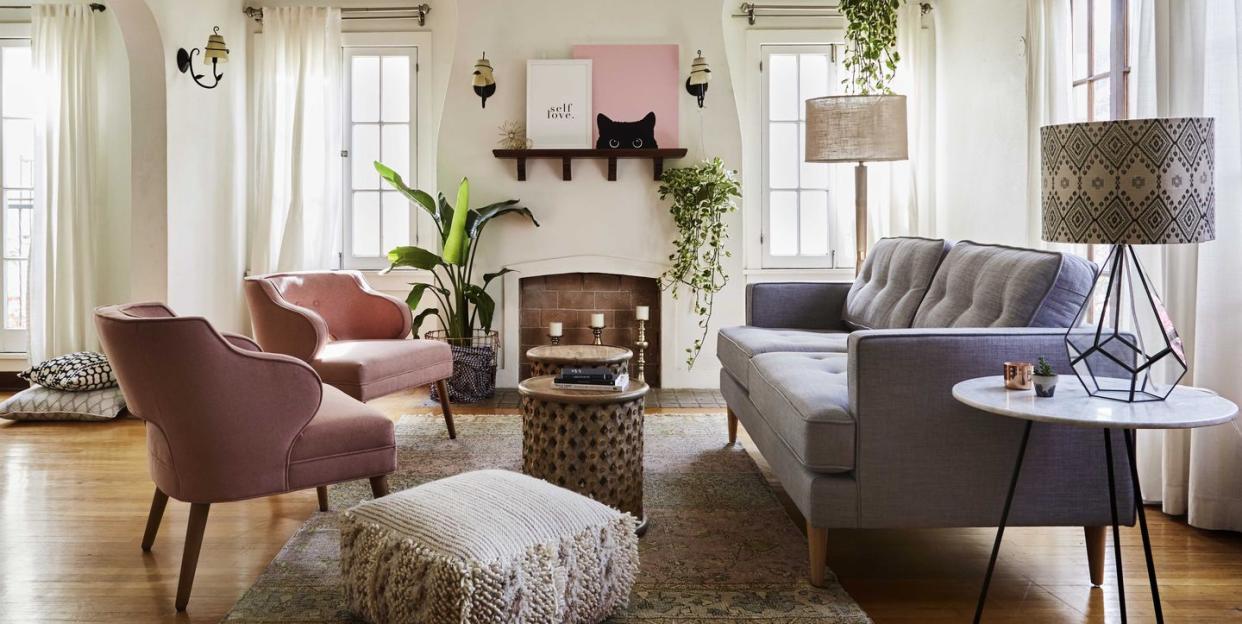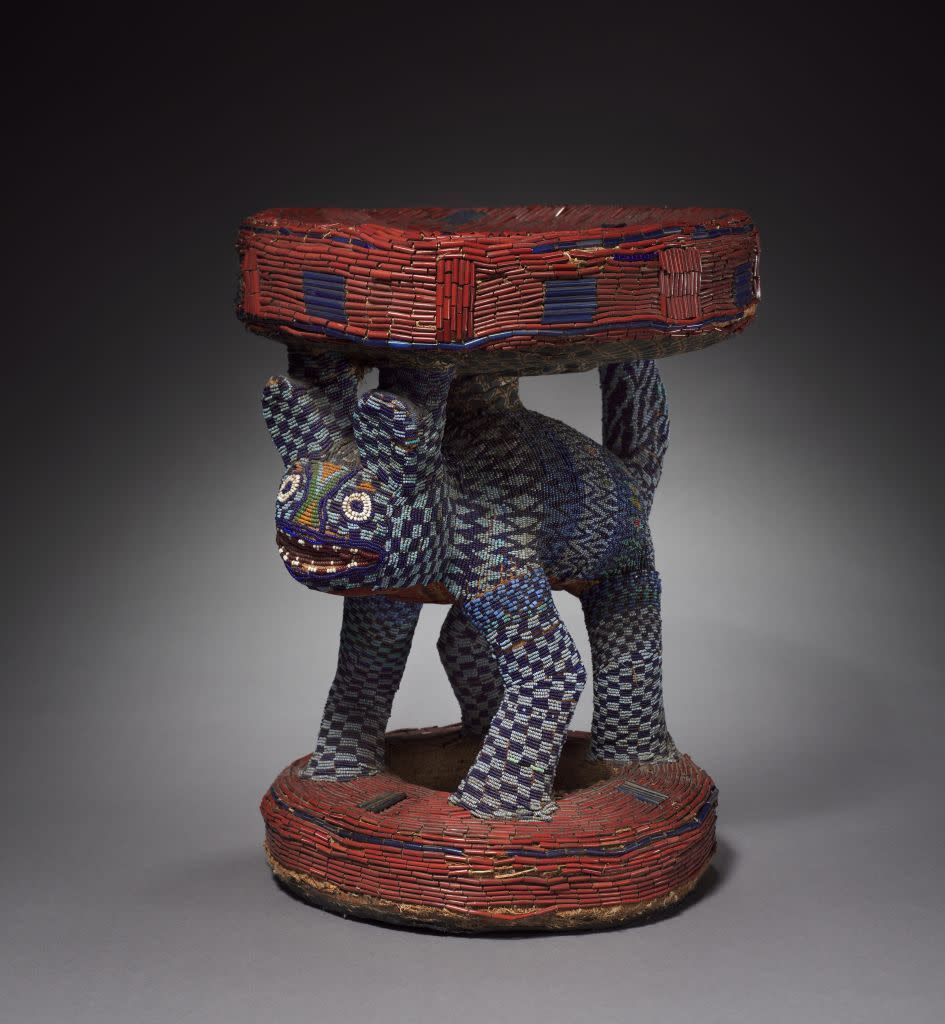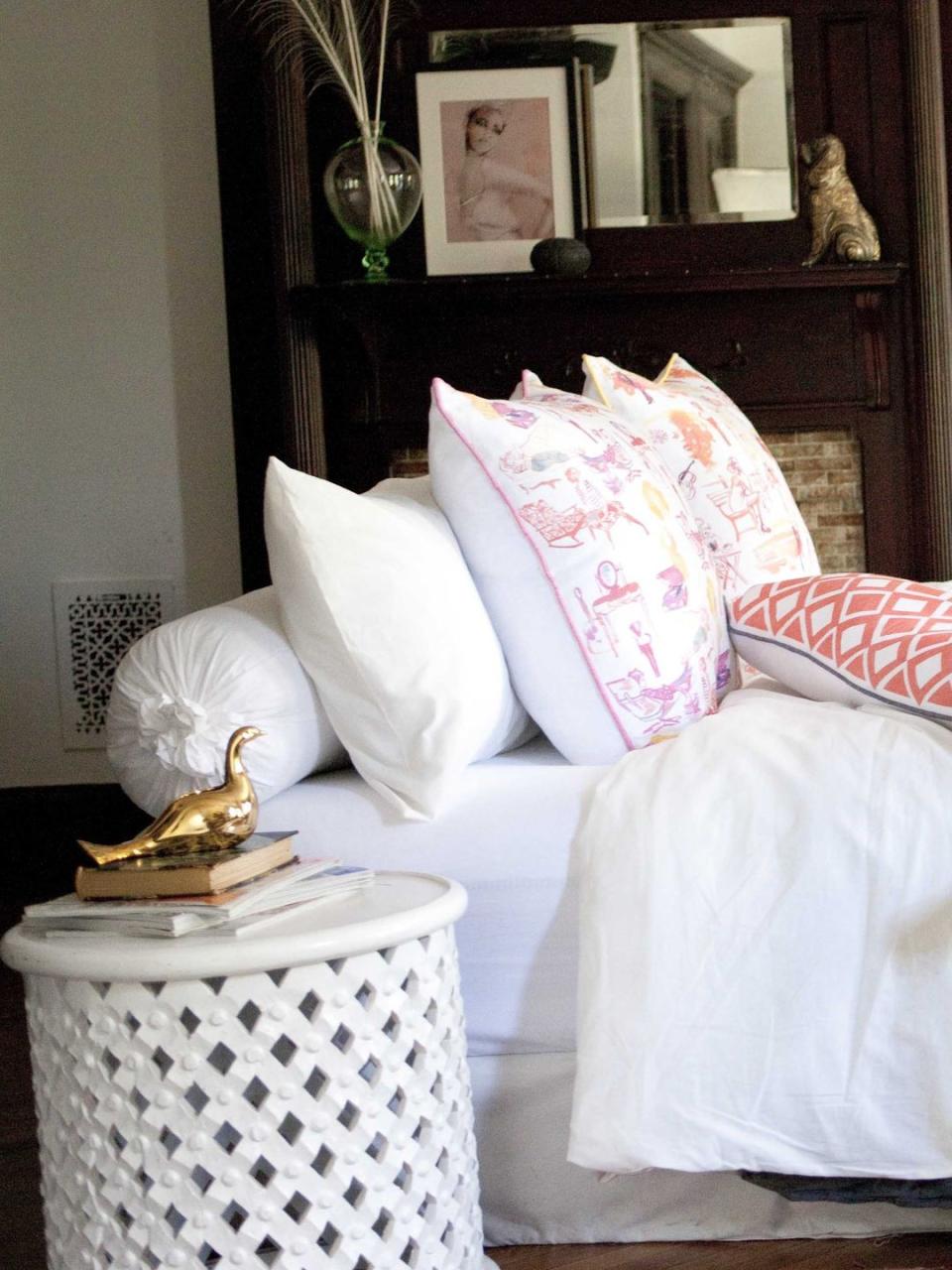This Popular Side Table Is Actually a Royal Throne

Jeanine Hays and Bryan Mason are authors, designers, and the founders of the New York-based lifestyle and design brand AphroChic. In this column, they dive into the rich history of various design objects and motifs that originate within the African Diaspora.
That beautiful hand-carved table you’ve been seeing in some of your favorite interiors has a unique history behind it. In fact, it’s not even really a table—it’s a handmade throne, literally designed and fit for royalty. The Bamileke stool is a work of art, a touch of African culture and history, and so much more than a coffee table.
Among the many cultures that exist throughout the African continent, the creation of hand-carved stools is one of the oldest and most pervasive furniture traditions. There are hundreds of stools to choose from, each designed with its own cultural context and meaning. Each stool has a distinct history—and is often not just a resting station for objects or bodies. In that way the Bamileke stool is like other Bamileke works of art, such as the famous tyn, or juju hats.
Pieces created by the Bamileke, like the work of other kingdoms of the Cameroon Grasslands, often play an important role in state ceremonies. These hand-carved stools have long been used as ceremonial seating to indicate the status and power of tribal chiefs and kings. Each stool is hand-carved from a single piece of local teum wood and then stained. The status of the owner is represented in the particular design.
The many traditional design motifs found in Bamileke stools include leopards, spiders, lizards, buffalo, elephants, lions, and pythons, as well as human figures and heads and other, more abstract, designs. Glass beads are used to embellish the most important stools. These are reserved for high-ranking nobles in Cameroonian society, including the Fon (king), chiefs, and Ma Fo (powerful women).

Each of the motifs is associated with a distinct meaning associated with the traits the animal displays in nature, which attributes them to the stool’s occupant. The leopard, for example, is known to be cunning, fast, mobile and guardedly aggressive. It signifies the ability to survive and is the most important royal icon, often considered the king's alter ego. The spider, often found on more abstract stools, is a symbol of wisdom.
The most well-known Bamileke stool pattern outside of Cameroo—the geometric crisscross pattern seen on many of the stools you’ll find in homes today—is representative of the earth spider. Considered a more common motif, and often less embellished by beadwork than the leopard or other reserved symbols, the spider and cowrie shell designs are considered appropriate for sale and often go to tourists or retail outlets. That’s why it’s ok to use them as coffee tables, end tables, or even seating. But if you’re ever traveling in Cameroon and see a gorgeously beaded Bamileke stool with an abstract depiction of a fierce leopard, it’s not a place to leave your keys and please—don’t sit down.
Conversely, Bamileke stools that are widely available to the global market can have a variety of uses in today’s interiors. They are great for extra seating and are widely used as side tables. The wood used can be naturally water resistant, making them great outdoor tables as well.

However you choose to incorporate them in your home, it’s important to care for these pieces like the works of art that they are. While you may not need to keep them reserved for any nobles who might drop by for a visit, you’ll want to honor the craftsmanship that goes into creating each piece. A beaded piece should be reserved strictly as a work of art, and be displayed rather than used within the home. However, wooden stools with common motifs, like the cowrie or spider, have been made with function in mind, and therefore can be used as furnishings. But, whether beaded or wood, leopard motif or cowrie, Bamileke stools are impressively constructed, beautifully designed and will make any interior feel like it’s fit for a Fon.

Follow House Beautiful on Instagram.
You Might Also Like

